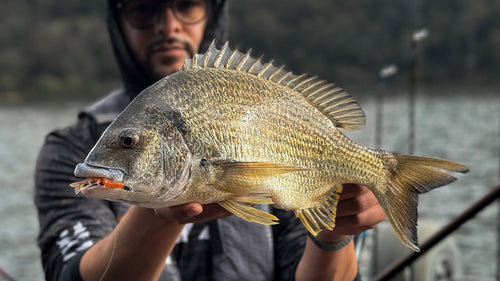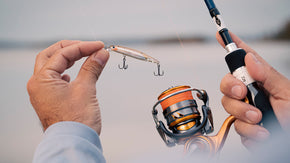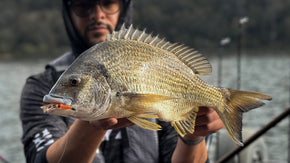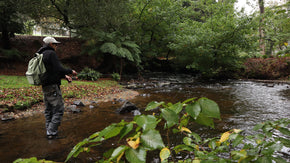Posted 16th October 2025
How to Catch Bream on Rocky Edges

By Abz Meshlawi
Fishing rocky edges for bream is a style that rewards precision and persistence. The structure itself can look unforgiving, but it holds some of the best fish you will find. Rocky shorelines, break walls, and points all create natural ambush zones where bream feed and learning how to target them has improved my fishing in a big way.
One of the most important things when fishing rocky edges is accuracy. Bream will often sit tight to the rock face or in the cracks and holes that you can barely see. If your cast lands a metre short, your lure will often go untouched. Hitting the right line along the edge or even clipping a rock on the way through can be the difference between a quiet session and a great one.

Depth is another factor I pay close attention to. Some edges taper off slowly into two or three metres, while others drop away fast into five or six. Both can hold fish, but they often feed differently depending on the depth and current. On shallow edges, I’ll focus on subtle presentations like a Bait Junkie Prawn in the 2.35 or 3 inch size, fished in natural colours such as bloodworm, motor oil or olive oil. On deeper edges, I will often give the lure more time to sink and keep it tight to the structure as long as possible.
Current is one of the biggest keys to this style of fishing. Bream feed tight to the rocks on both the run in and run out, but it’s the spots with water pushing through that consistently produce. Back eddies can be gold, especially when a big boulder or section of rock sticks out further than the rest. These areas break the current, collect bait, and give the bream a place to sit and feed with minimal effort.
My go to hardbody for this style is the Infeet Spike 44, which I like to crash into the rocks during summer to draw reaction bites. When I hear bream feeding off the surface, I switch to a topwater like the Slippery Dog. Working these lures tight to the edge gets their attention fast.
Tackle is another part of the puzzle. The Infeet Z 712LFS has become one of my favourites for long, accurate casts, while the Infeet SK 722LFS gives me a little extra length and control when working lures along the rocks. Both rods are light, sensitive, and strong enough to turn a fish away from the structure when it counts.
Fishing rocky edges has not only produced some great bream for me but it has also sharpened my casting and taught me to read the water better. If you are looking for a challenge that will build your skills and test your accuracy, find some rocky shoreline and put the time in. The fish are there, and the reward is worth it.
Quick tips
- Focus on accuracy. Cast tight to the rocks and don’t be afraid to bump your lure into structure.
- Look for current. Flowing water and back eddies are prime ambush points.
- Mix up your depths. Let lures sink on deeper edges and work them slower.
- Use the right tools. Subtle plastics, Diving crank baits and top water lures all have their moments
- Trust your tackle. A sensitive rod with enough power to turn fish makes all the difference.
















